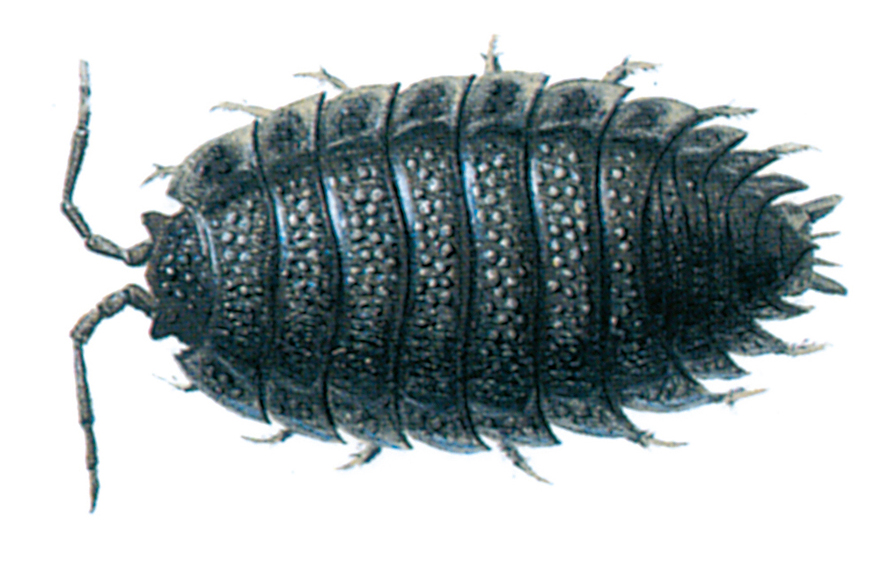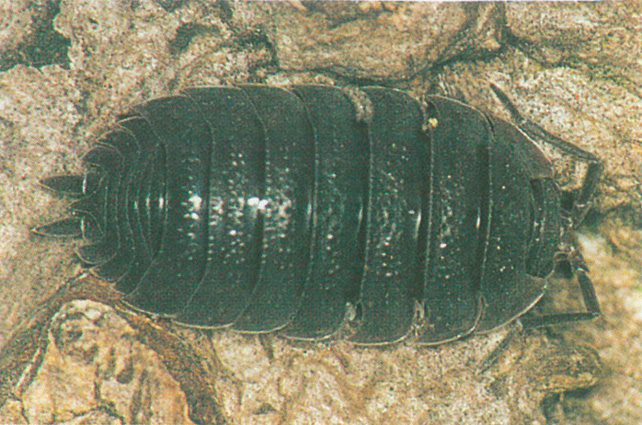(Latin: Order Isopoda)

The greyish, oval woodlice, somewhat reminiscent of tiny armadillos, are among the better known small crawling invertebrates, and they have acquired many folk names. In Scotland, for instance, they are known as slaters.
Woodlice are the only crustaceans that have become adapted to living exclusively on land. Other well-known crustaceans include lobsters, crabs, prawns and sandhoppers.
The relationship of woodlice to the other crustaceans is shown by the fact that the female carries her eggs around in a special brood pouch, and that they breathe by gills, which are in the form of thin-skinned appendages on the legs.
Woodlice have to live in damp places for the gills can only function if they are kept damp. The body does not have the waterproof, waxy outer cuticle characteristic of an insect, and if a woodlouse wanders into a dry room it will become desiccated within a few hours.

These small crustaceans feed mainly on plant matter, but may also gnaw dead animals. Those that are seen in houses and cellars usually belong to the species Oniscus asellus and Porcellio scaber.
When large numbers of woodlice are seen indoors it means that the atmosphere is too damp. Sometimes several of them may find their way into a room or cellar, and these will usually be newly hatched individuals from a pile of old straw or withered leaves, or other garden refuse. They occasionally cause damage by gnawing fruit and vegetables stored in a damp cellar.




